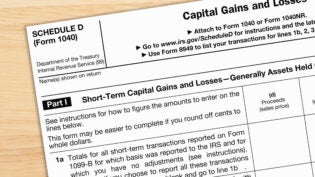What You Need to Know About Payroll Tax Deadlines
By: Wagepoint

From the moment you hire your first employee, you quickly realize there’s a lot more to payroll than simply issuing a check. For example, there are federal, state and even local taxes that need to be deposited (paid) and reported. Of course, just to keep things interesting, there’s an accompanying maze of deadlines. But don’t worry, this article will help keep you on the right path.
Why This Matters
While having a bookkeeper or using online payroll companies serving small businesses, like Wagepoint, helps you simplify and automate your payroll process — every business owner needs to be aware of the deposit and reporting deadlines. In fact, the Internal Revenue Service (IRS) considers you responsible for these deadlines, even if you’ve contracted with a third-party to manage your payroll.
Federal Employment Taxes
Starting at the top, the federal employment taxes that an employer is responsible for depositing and reporting include:
- Federal Income Tax — This is a pay-as-you-go tax. The amount deducted by the employer from each check is set when the employee completes aW-4. To determine the right amount to withhold, employers and employees can use the withholding calculator on the IRS website. (At the start of each year, you should also remind employees to submit a new W-4 if they’d like to change their withholding.)
- Social Security and Medicare (FICA) Taxes — Employers must withhold and pay a matching amount of social security (6.2% with a wage limit base of $118,500) and Medicare taxes (1.45% with an additional .9% for wages over $200,000 in a calendar year). Withholding tables can be found inPublication 15 (Circular E), Employer’s Tax Guide and Publication 15-A, Employer’s Supplemental Tax Guide.
The Golden Rule for Depositing Federal Employment Taxes
It is generally recommended that you make your federal income tax, social security and Medicare deposits, collectively known as trust fund taxes, on the same pay date or check date that you issue your payroll checks to your employees.
Why You Should Follow This Golden Rule
Since the IRS has identified small businesses as the largest source of uncollected taxes — they’re pretty serious about solving this problem. It’s considered a federal crime not to comply and employers are 100% personally liable for these taxes, even if you’re incorporated as a limited liability company. This means that even if your company has filed for bankruptcy, the IRS can still come after your personal assets.
Other Deposit Schedules
If you choose not to deposit your federal employment taxes the same day that you issue payroll, you may follow a monthly, semi-weekly, annual or next-day deposit schedule. Before the start of each calendar year, you must use a 12-month lookback period, ending June 30 of the previous year (the four prior quarters), to confirm which schedule you need to use.
Federal Employment Tax Schedules — Deposits and Reporting
| Monthly | Semi-Weekly | Annually | Next-Day | |
| Criteria | If you are a new employer, had no employees during the four previous quarters, or your total payroll taxes was less than $50,000 — you are a monthly depositor. | If your total taxes were more than $50,000 — you are a semi-weekly depositor. | If your payroll taxes were less than $2,500 for the current or previous quarter and you do not incur a $100,000 next-day deposit obligation — you can make your deposit annually, at the same time you report your taxes, as long as you report on time. | If you accumulate $100,000 or more in taxes on any day that your payroll is issued, regardless if you are monthly or semi-weekly, you must deposit the tax by the next business day. |
| Deposit Dates*
|
You must deposit monthly payroll taxes by the 15thday of the following month. | Deposit taxes for payments made Wednesday – Friday by the following Wednesday.
Deposit taxes for payments made Saturday – Tuesday by the following Friday. |
January 31 – the last day of the fourth quarter. | The next business day. |
| Reporting Dates | Report your total taxes deposited for the quarter, using Form 941, by April 30, July 31, October 31 and January 31. | Report your total taxes deposited for the quarter, using Form 941 and Form 941 Schedule B, by April 30, July 31, October 31 and January 31. | Report your total taxes deposited, usingForm 941, by January 31. | Report your total taxes deposited for the quarter, using Form 941and Form 941 Schedule B, by April 30, July 31, October 31 and January 31. |
State and Local Employment Taxes
All the states, even the ones who don’t have an income tax, have a state taxing authority. To find out more about state-level employment taxes, use this list of state government websites. To find out more about local employment taxes, see the local governing bodies in the area where you operate.
Federal (FUTA) and State (SUTA or SUI) Unemployment Insurance Taxes
Both federal and state unemployment insurance taxes are paid entirely by the employer. (For fun, try saying FUTA and SUTA three times, really fast.)
- FUTA taxes (6% with a credit of up to 5.4% with certain state income taxes) are owed if you paid a minimum of $1,500 in wages in the previous calendar year or quarter. Deposits are due the last day of the first month that follows the end of the quarter.*
- Each state also has specific rates and deposit schedules. Thisarticle by the Small Business Administration has links to each of the state unemployment insurance tax office.
- California,Hawaii, New Jersey, New York, Rhode Island and Puerto Rico also require that employers pay for temporary disability insurance.
Employer Identification Numbers and Electronic Payments
Employers need an identification number (EIN) for federal employment and unemployment taxes — as well as for state and local tax authorities (see each authority’s website). Secondly, in most cases, all deposits must be made electronically. (If you are still using paper methods, you may also need the assistance of a therapist.)
The Definitive Guide to Federal Employment Taxes
Publication 15 (Circular E), Employer’s Tax Guide offers a comprehensive summary of federal employment tax information, including a checklist of employer responsibilities. For a quicker read, there’s a handy summary of introductory material. If you don’t mind minimal production values, you can also watch this IRS video.
One Last Tip — Keep an Eye on Your Deposits
Even if you outsource your payroll function, be sure to monitor your tax withholdings and deposits. If your payroll tax deposits are made electronically, it should be easy to see this activity in your account. Set a schedule and check every few weeks in order to catch any mistakes.












